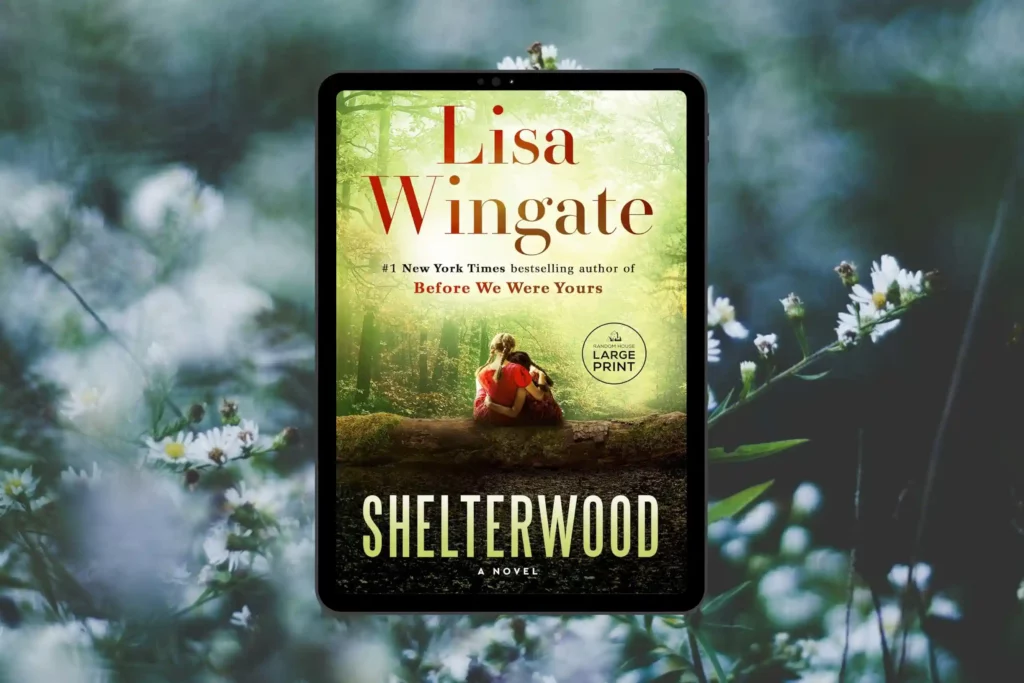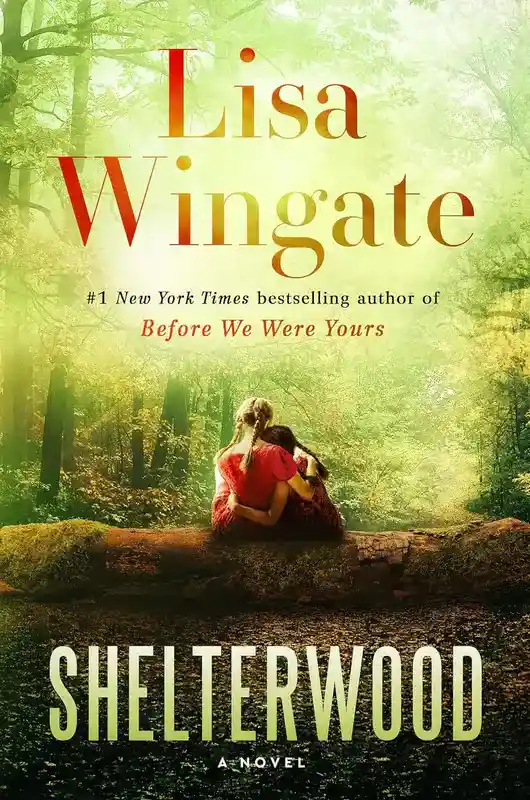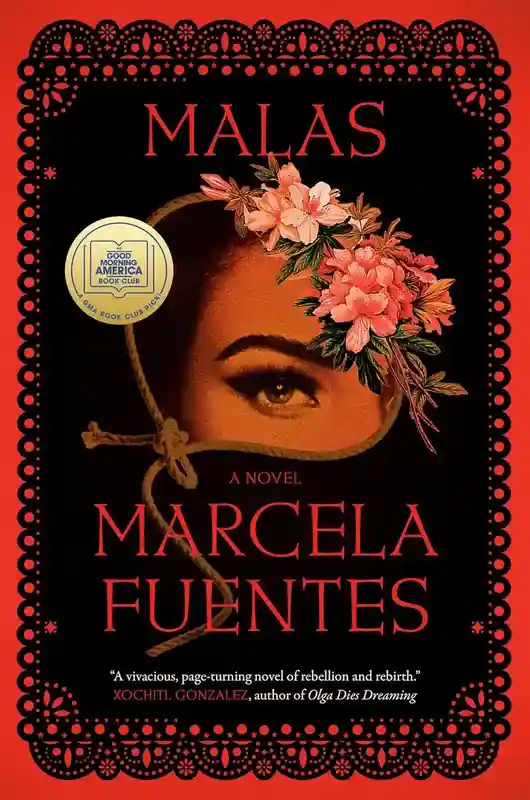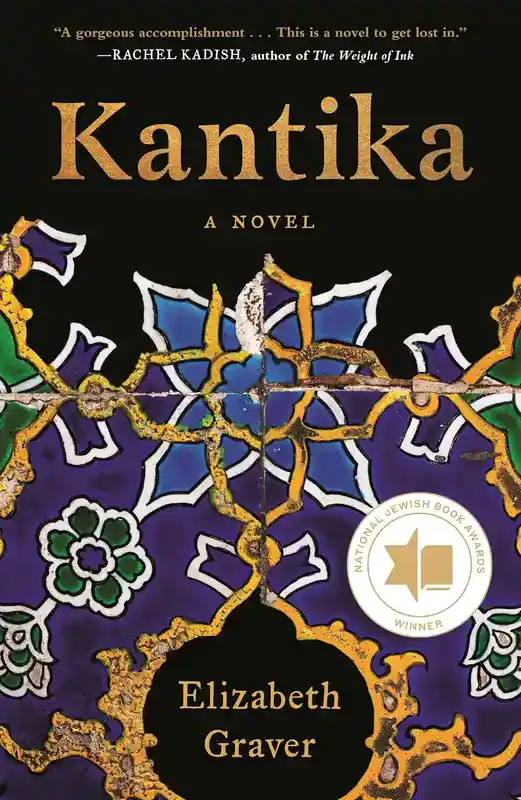
Discussion reading guide and book club questions for Shelterwood by Lisa Wingate explore the historical struggles for justice and land rights, the complexities of family relationships across generations, the resilience of individuals in the face of adversity, and the enduring power of friendship and community.
This novel challenges us to confront the injustices of history while celebrating the resilience of marginalized voices.
About the Author | Q&A with Lisa Wingate
Book Club Questions | Additional Recommendations | Book Club Kit
About Shelterwood
Set across two different time periods, Shelterwood follows the lives of two strong women: Olive Augusta Radley in 1909 and Valerie Boren-Odell in 1990.
Olive Augusta Radley is a pioneer living in Oklahoma in the early 1900s. She opens her home to Choctaw girls and fights for their rights in a time when child labor is rampant and children’s welfare is often neglected.
Valerie Boren-Odell is a modern woman who moves to Horsethief Trail National Park in 1990. As she uncovers secrets from the past, she finds herself on a journey of self-discovery and courage, learning about the land’s history and the people who once lived there.
Shelterwood by Lisa Wingate

Release date: June 4, 2024
Genre: Women’s Friendship Fiction
Hardcover: 544 pages
Publisher: Random House Large Print
About Lisa Wingate

Lisa Wingate is the author of the #1 New York Times bestseller “Before We Were Yours,” which has sold over three million copies and been translated into more than forty languages. She co-authored the nonfiction book “Before and After” with Judy Christie.
Lisa’s writing has earned her numerous accolades, including the Goodreads Choice Award, the Southern Book Prize, and finalist spots for the Oklahoma Book Award. In 2023, she was honored as a Distinguished Alumni of Oklahoma State University.
Lisa’s journey as a writer began with the encouragement of a first-grade teacher who believed in her talent. Her grandmother would usually share stories of her life and lessons learned while tending to her rose garden, which inspired Lisa’s first mainstream novel, “Tending Roses.”
When she’s not writing, Lisa enjoys spending time with her husband and their cuddly dog, Huckleberry, in North Texas and Central Colorado. She also loves exploring the great outdoors and finding inspiration in the beauty of nature.
Q&A about Shelterwood
Q: Lisa, what inspired you to delve into the complex history of Oklahoma, particularly focusing on the experiences of children during that tumultuous time?
A: Well, the initial inspiration came when I stumbled upon two intriguing historical tidbits. One was the story of Sarah Rector, this remarkable young girl who found herself owning valuable oil land in Oklahoma at just eleven years old. The second was a brief newspaper mention from 1909 about a woman investigating reports of “elf children” living in a hollow tree in the Oklahoma hills. These stories fascinated me because they hinted at a much deeper and darker history that was largely buried and forgotten.
Q: Could you elaborate on how these historical nuggets evolved into the narrative of “Shelterwood”?
A: Absolutely. “Shelterwood” weaves together two timelines—1909 and 1990—in Oklahoma. In 1909, we follow the journey of two little girls who flee a dangerous situation and find refuge in the woods, where they are discovered by Kate Barnard, the first woman elected to a statewide office in Oklahoma. Her efforts to uncover the truth behind their plight and the larger issues of corruption and exploitation of children’s oil rights form a central part of the narrative.
Q: How did you approach the research for “Shelterwood”? Did your previous works, like “Before We Were Yours,” influence your process?
A: Research is always a crucial part of my writing process. For “Shelterwood,” I delved deep into historical records, newspaper articles, and personal accounts from the time period. My previous work, especially “Before We Were Yours,” which also dealt with hidden histories and the mistreatment of children, certainly informed my approach. Each novel requires its own set of research and understanding of the historical context to accurately portray the lives and challenges faced by the characters.
Q: The landscape of Oklahoma seems almost like a character itself in “Shelterwood.” How did you bring the setting to life?
A: Oklahoma’s landscape is indeed integral to the story. From the rugged Winding Stair Mountains to the vast expanses of wilderness and the fraught history of the land allotments, the setting plays a significant role in shaping the characters’ lives and decisions. I wanted readers to feel immersed in the beauty and danger of the Oklahoma wilderness, and to understand how these landscapes influenced the characters’ actions and fates.
Q: “Shelterwood” touches on themes of resilience, justice, and the power of uncovering buried truths. What do you hope readers will take away from the novel?
A: Above all, I hope readers come away with a deeper understanding of this hidden history in Oklahoma—the exploitation of children’s rights, the corruption surrounding oil discoveries, and the resilience of those who fought against injustice. I want readers to feel inspired by the courage of characters like Kate Barnard and the children who faced unimaginable challenges. Ultimately, “Shelterwood” is a testament to the enduring power of truth and justice, even in the face of overwhelming odds.
Q: Lastly, what was the most surprising or rewarding aspect of writing “Shelterwood” for you?
A: The most rewarding aspect was uncovering these hidden stories and bringing them to light. As a writer, there’s a sense of fulfillment in giving voice to those whose stories have been forgotten or overlooked. It’s a reminder of the importance of remembering our history, even the uncomfortable parts, and learning from it as we move forward.
Q: Can you tell us about the setting of Winding Stair mountains in your novel “Shelterwood”?
A: Winding Stair mountains are a hidden gem, still unspoiled and quiet, perfect for those seeking the tranquility of pine-covered mountains. They were heavily impacted by timber companies in the early 20th century, leading to deforestation, but have since been reforested and preserved by the government. The area is known for its mystical atmosphere with peculiar rock formations that evoke shapes like dragons or people, offering a rich historical backdrop with remnants of an old military road from the 1830s still visible.
Q: How did the historical context of Oklahoma influence your storytelling in “Shelterwood”?
A: Oklahoma’s history, often buried and forgotten, played a significant role in shaping the narrative of “Shelterwood”. The story touches upon forgotten histories like that of Kate Barnard, an influential figure in Oklahoma’s early statehood, and explores themes of women’s rights and the role of women in society during the early 20th century. The novel draws parallels between past and present, highlighting how historical injustices can echo through time.
Q: Was there pressure on you as a writer following the success of “Before We Were Yours”? How did this influence your approach to “Shelterwood”?
A: There’s always a level of pressure following a successful book, but having written numerous books prior to “Shelterwood”, I approached it with a focus on storytelling and authenticity rather than trying to replicate past success. Each book is a new challenge, and while there’s no formula for success, I strive to deliver compelling narratives that resonate with readers.
Selected Book Reviews for Shelterwood
“Wingate’s stellar latest explores a centuries-long legacy of missing child cases. . . . Wingate’s insightful depiction of her young characters’ vulnerability and resourcefulness enriches the intricate plotting, and her portrayal of the region’s history, culture, and landscape enthralls. Wingate is at the top of her game.”—Publishers Weekly (starred review)
“Lisa Wingate works her signature magic in creating strong, smart, and willful children who survive at any cost. Shelterwood is as heartwarming as it is mysterious and utterly absorbing.”—Sadeqa Johnson, author of The House of Eve
“Wingate’s best book yet! Shelterwood explores crucial societal issues against the nail-biting backdrop of early-twentieth-century Oklahoma, where the struggle for land and oil threatens lives. . . . A spellbinding and important tale.”—Marie Benedict, author of The Mystery of Mrs. Christie and The Personal Librarian
Book Club Questions for Shelterwood
- The beginning of each chapter of SHELTERWOOD starts with the inclusion of a historical quote. How did this influence your reading experience?
- How does Ollie’s perception of her stepfather shape her actions throughout the story? What specific events push her to flee with Nessa?
- What personal challenges does Valerie face as a single mother and a park ranger? How do these challenges impact her investigation?
- What did you learn about the treatment of Native American children during the early 1900s? How does Wingate incorporate historical facts into Ollie’s story?
- Which theme in SHELTERWOOD resonated the most deeply with you: the rights of women and children, family, or justice? Why?
- How did the dual timelines and perspectives of Olive Augusta Radley in 1909 and Valerie Boren-Odell in 1990 shape the narrative? What similarities and differences do you notice in their journeys and the challenges they face
- How does the novel portray the relationship between the Choctaw community and the broader society in both time periods?
- Discuss how the novel addresses the theme of justice through the characters of Ollie, Valerie, and Kate Barnard. What injustices do they confront?
- How do the discoveries in Horsethief Trail National Park uncover past injustices, and what do they reveal about the community’s history?
- How do the events in 1909 and 1990 mirror each other? What parallels can you draw between Ollie’s and Valerie’s quests for truth?
- Were you familiar with the historical events of Oklahoma and the Choctaw Nation prior to reading SHELTERWOOD? What new insights did you gain from the novel?
- How does the historical context of female pioneers like Kate Barnard, who fought for children’s rights, contribute to the overall themes and conflicts in the story?
- How does the history of the land in Horsethief Trail National Park affect the characters in the present day? Have you discovered similar “secrets” in your own community
- Did you find one timeline more compelling or informative than the other? Why?
- Which scene or moment in Ollie’s journey was the most impactful for you? Why did it stand out?
- What discovery in the 1990 timeline had the most significant effect on Valerie, and how did it change her perspective?
- How does the mystery of the missing teenage hiker and the unearthed skeletons drive the plot forward? What were your theories as you read?
- How did the intertwining mysteries of the past and present keep you engaged in the story?
- Discuss the significance of Kate Barnard’s character and her historical role. How does her story influence the novel’s themes?
- How do Ollie and Valerie embody strength and resilience in their respective eras? What challenges do they overcome?
- How does Wingate’s description of the Winding Stair Mountains contribute to the mood and tone of the novel? Can you visualize the setting?
- How does the wilderness serve as both a refuge and a danger for Ollie and Nessa?
- How did “Shelterwood” change your understanding of Oklahoma’s history and the plight of Native American children?
- Did the novel inspire you to learn more about any specific historical events or figures mentioned?
- Were you satisfied with how the novel resolved the mysteries from both timelines? Why or why not?
- What do you think the future holds for Valerie and her relationship with the Choctaw community?
- Think about Ollie’s interactions with Nessa and the other “elf children” develop throughout the novel. What do these relationships reveal about her character?
- How does Valerie build trust with the Choctaw Tribal Police, and why is this partnership crucial to solving the mysteries?
- Would you say that Olive and Valerie struggle between self-interest and the need to protect the vulnerable? Do you believe heroism exists in many forms, or is it limited to a select few?
- How do race, identity, culture, gender, economic status, and discrimination play out in the story? How do these elements shed light on the historical period of the early 1900s?
- How do the treasure hunters, outlaws, and rugged landscape of the Winding Stair Mountains contribute to the suspense and tension in SHELTERWOOD? Were there particular moments of danger or surprising twists that stood out to you?
- The term “Shelterwood” refers to older trees protecting younger growth. How is this concept reflected in the characters’ actions and relationships?
- What role does the cave play in the novel? How does it symbolize both concealment and revelation?
- How did the portrayal of the children’s struggles and resilience affect you emotionally? Were there moments that were particularly moving or difficult to read?
- How does Wingate balance the darker aspects of the story with moments of hope and perseverance?
- How does the struggle for land ownership and wealth drive the actions of the characters? Discuss the impact of their choices on the broader community. What lessons can we learn from these stories of ordinary people?
- How is Valerie’s life affected by the move to Horsethief Trail National Park? How does she navigate the balance between career and family? Do all working parents face similar pressures, and has the idea of “having it all” changed over the years?
- How does the inclusion of real historical figures like Kate Barnard add to the authenticity of the story?
- What were your thoughts on the ending of SHELTERWOOD? Where do you think the characters will go from here? If you were to write their futures, what would their stories be?
- Wingate is known for her meticulous research. Were there historical details that stood out to you as particularly well-integrated or surprising?
Books Like Shelterwood
Malas by Marcela Fuentes

A story full of passion and revenge, following one family living on the Texas Mexico border and a curse that reverberates across generations—”Fuentes has achieved something rare and indelible with this story of complex women.” (Erika L. Sánchez)
In 1951, a mysterious old woman confronts Pilar Aguirre in the small border town of La Cienega, Texas. The old woman is sure Pilar stole her husband and, in a heated outburst, lays a curse on Pilar and her family.
More than forty years later, Lulu Muñoz is dodging chaos at every turn: her troubled father’s moods, his rules, her secret life as singer in a punk band, but most of all her upcoming quinceañera. When her beloved grandmother passes away, Lulu finds herself drawn to the glamorous stranger who crashed the funeral and who lives alone and shunned on the edge of town.
Their unexpected kinship picks at the secrets of Lulu’s family’s past. As the quinceañera looms—and we move between these two strong, irascible female voices—one woman must make peace with the past, and one girl pushes to embrace her future.
Rich with cinematic details—from dusty rodeos to the excitement of a Selena concert and the comfort of conjunto ballads played at family gatherings—this memorable debut is a love letter to the Tejano culture and community that sustain both of these women as they discover what family means.
Table for Two by Amor Towles

From the bestselling author of Rules of Civility, A Gentleman in Moscow, and The Lincoln Highway, a richly detailed and sharply drawn collection of stories, including a novella featuring one of his most beloved characters
Millions of Amor Towles fans are in for a treat as he shares some of his shorter fiction: six stories based in New York City and a novella set in Golden Age Hollywood.
The New York stories, most of which take place around the year 2000, consider the fateful consequences that can spring from brief encounters and the delicate mechanics of compromise that operate at the heart of modern marriages.
In Towles’s novel Rules of Civility, the indomitable Evelyn Ross leaves New York City in September 1938 with the intention of returning home to Indiana. But as her train pulls into Chicago, where her parents are waiting, she instead extends her ticket to Los Angeles. Told from seven points of view, “Eve in Hollywood” describes how Eve crafts a new future for herself—and others—in a noirish tale that takes us through the movie sets, bungalows, and dive bars of Los Angeles.
Written with his signature wit, humor, and sophistication, Table for Two is another glittering addition to Towles’s canon of stylish and transporting fiction.
Kantika by Elizabeth Graver

A dazzling Sephardic multigenerational saga that moves from Istanbul to Barcelona, Havana, and New York, exploring displacement, endurance, and family as home.
A kaleidoscopic portrait of one family’s displacement across four countries, Kantika―“song” in Ladino―follows the joys and losses of Rebecca Cohen, feisty daughter of the Sephardic elite of early 20th-century Istanbul. When the Cohens lose their wealth and are forced to move to Barcelona and start anew, Rebecca fashions a life and self from what comes her way―a failed marriage, the need to earn a living, but also passion, pleasure and motherhood.
Moving from Spain to Cuba to New York for an arranged second marriage, she faces her greatest challenge―her disabled stepdaughter, Luna, whose feistiness equals her own and whose challenges pit new family against old.
Exploring identity, place and exile, Kantika also reveals how the female body―in work, art and love―serves as a site of both suffering and joy. A haunting, inspiring meditation on the tenacity of women, this lush, lyrical novel from Elizabeth Graver celebrates the insistence on seizing beauty and grabbing hold of one’s one and only life.
Discussion Guide for Shelterwood (PDF)
Happy reading! ❤️